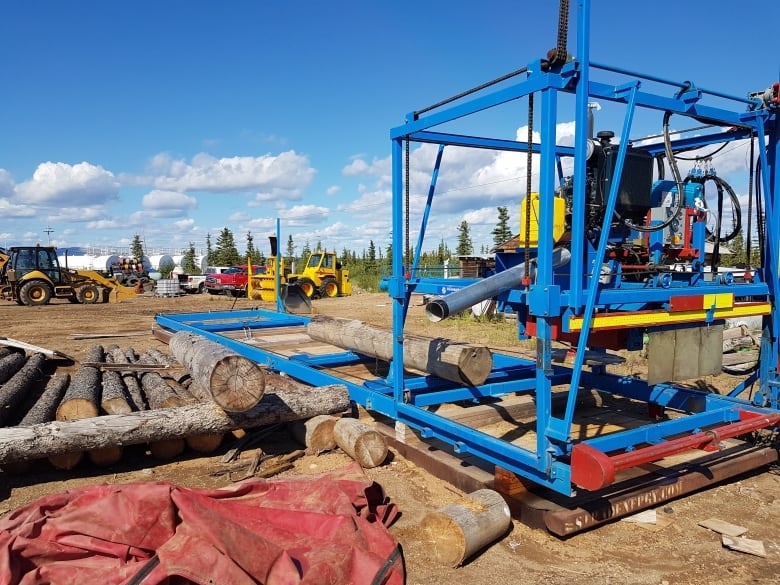Communities across the N.W.T. are taking the housing crisis into their own hands
This is part six of a series on the housing crisis in the Northwest Territories.
While the N.W.T. Housing Corporation says they’re going to need $500-$600 million to improve housing conditions in the N.W.T., almost double the cost predicted in 2017, some community leaders across the territory have taken it upon themselves to find a solution for their people.
One project that is seeing a lot of success is Fort Good Hope’s K’ásho Got’ıne Housing Society and their community driven approach.
Arthur Tobac is the business manager with Ne’Rahten Development Ltd. and has been helping the housing society get established and structure their programs.
Tobac said, since the society was founded in 2016, they have kept busy with all the repairs needed on residents’ homes.
“There was a couple of years where we just tackled roofs … because it was so bad. There was a lot of them that were just rotting away and there was one house where there was hardly any roofing that was left. There was just tarp covering the roof.”
Their most recent project included setting up a men’s transitional home, which is being occupied by three residents. Tobac said the transitional home really highlighted the effect having a roof over your head can have.
“It’s not a housing issue now, it’s a human issue,” Tobac said.
“You’re dealing with people — with your own people. There’s a lot of things that they’re burdened with, that they’re undergoing simply because there’s a lack of housing.
“If you have no place to lay your head at night, you can’t keep a job. If you have no place to sleep, there’s no way you can start taking your education seriously. If there’s no place to sleep or [don’t] have a residency, you can’t access good programs.”
In December 2020, the K’ásho Got’ıne Housing Society was given full control over handling repairs on private properties. It’s a pilot project between the housing society and the N.W.T. Housing Corporation to try speed up repairs and give more say to the community on who is awarded the work.
Tobac said ultimately, the goal for the K’ásho Got’ıne Housing Society — and for many leaders — is self-sufficiency for homeowners and decreasing their dependence on institutions like the N.W.T. Housing Corporation.
“We want them to start looking after themselves and … look after their homes,” Tobac said.
In Nahanni Butte, Chief Steve Vital says the community is working toward adopting a similar model to Fort Good Hope in dealing with its housing issues.
The community received $50,000 in December and have been using every cent repairing heating, plumbing and roofing.
“We keep on addressing our housing problems to [the N.W.T. Housing Corporation] and it just doesn’t seem to go anywhere,” Vital said.
“That’s why we’re doing this rapid housing repair, so at least it’s getting some of the issues we have addressed.”

One log at a time
The K’ásho Got’ıne Housing Society and Nahanni Butte both want to start training their community members in the trades.
The leaders hope this encourages work to stay in the community and also give more jobs and opportunities to youth.
In Fort Good Hope, the community has a sawmill that’s being used to cut their own wood for projects. For the past few years, they have been training people how to operate it and preparing lumber to be used to build homes.
The community also had plans to sell lumber to the department of Environment and Natural Resources, but COVID-19 put those on hold, says Tobac.
The community of Jean Marie River also has a sawmill in place, which Chief Stanley Sanguez is excited to put to good use now that its construction has been finished, and once they get approval to harvest wood.
“If I ever got all the things that I [need] for the sawmill, then I would have had 5,000 cubic metres of wood in our yard here and we’ll be cutting lumber all summer,” Sanguez said.
He said the lumber cut from the mill would not only go toward building new units for residents, but would also be available for people to buy when doing their own home repairs.
In Colville Lake, Chief Wilbert Kochon said the community is reaching the final stages of a project started almost five years ago, where 11 young people were offered the opportunity to build their own log homes.
Now, after cutting down all the trees needed, hauling the wood, getting trained on the community’s sawmill and finalizing the paperwork, the four people that remain in the program are going to start construction on their houses this spring.

“We are going to continue that program and work with housing and see if we can build a lot more. This is kind of a pilot [project] so we have to make it work,” said Kochon.
“Any chance we can build more houses, we’d love that. Any more funding we can get, we’d sure go for it. We do want to build more houses.”
Training in the trades
Everyone CBC spoke to suggested taking advantage of the territory’s housing issues as a training opportunity for their community members.
“I think it could be an excellent opportunity for the government to look at a training program [for] just fixing existing housing stock that’s out there to try improve the livability for many of our residents,” said Ken Kyikavichik, Grand Chief of the Gwich’in Tribal Council.
Sanguez said he was awarded funding over three years to run a training program in Jean Marie River, as soon as they are able to start up the sawmill for the summer.
“We’re trying to train more younger people here,” said Sanguez, adding he hopes to make it a regional training program.
“Then hopefully we can get some young people … going back to school to learn to become foresters and take over these things that need to get done.”





